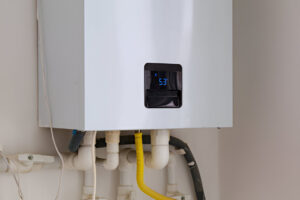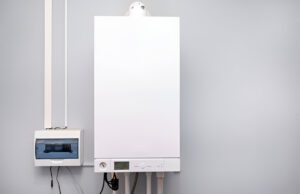Instant Geyser Safety, Usage & Repair Guide 2025
People like instant geyser, which are also called portable water heaters because they heat water quickly and efficiently. As the need for energy-efficient home equipment grows, these gadgets are now necessary in many homes. One new trend is the increasing use of mini geysers for kitchens, which are great for getting hot water quickly in small areas.
However, knowing how to use, safely, and fix instant geysers correctly is essential for making sure they last a long time and keep working at their best. We will talk about everything you need to know about instant geysers in this detailed guide, from how to install them and keep them safe to how to fix problems and make repairs.
What Is an Instant Geyser?
A storage tank is unnecessary with an immediate geyser, which boils water just when required. When you switch on the hot water faucet, electric or gas heating components heat the cold water immediately. Instant geysers are preferable since they heat water just when needed. This implies it consumes less energy than storage geysers.

Key Features of Instant Geysers
- Energy Efficiency: They don’t waste energy because they only heat water when it’s needed.
- Compact Size: Due to their small size, they take up less space than regular water heaters.
- Unlimited Hot Water: You will always have hot water as long as the unit is running well.
- Cost Savings: Because they only heat water when it’s needed, they tend to save you money over time.
Benefits of Using an Instant Geyser
There are many reasons why a quick fountain is better than a regular one, such as:
- Energy Conservation: Many water heaters keep water hot in a tank all the time. Instant geysers, on the other hand, only work when you need hot water, so they don’t waste power.
- Space Efficiency: They look better in bathrooms and kitchens because they are small.
- Long-Term Cost Savings: Your gas or electricity prices will go down over time because instant geysers use less energy.
- Quick Heating: With an instant fountain, the water is hot right away, so you never have to wait.
Safety Measures for Instant Geysers
To keep things from going badly, it’s essential to follow safety rules around quick geysers. Remember these safety tips when you use quick geysers:
1. Proper Installation
- Qualified Professional: The spring should always be put in by a trained expert. If the plumbing isn’t done right, there could be gas or electricity risks.
- Water Pressure: There should be a range of water flow that works with your geyser. A machine that has too much water flow may break down.
2. Electrical Safety
- Proper Wiring: It’s essential to connect the generator to a different power line with the correct wires and a grounded plug.
- Circuit Breaker: Only use a spout that has a circuit switch built in so that the electricity doesn’t get too high.
- Avoid Overloading: Do not put too many things in the same spot, which could damage the stream.
3. Prevent Water Leakage
- Check for Leaks Regularly: Every so often, check the spout for water leaks. Not only can a leak make the device less helpful, but if you connect it wrong, it can also make you more likely to get an electric shock.
4. Temperature Settings
- Moderate Temperature: Set the heat to a safe amount, like 37°C to 42°C, so you don’t get hurt. Be extra careful when setting the Temperature if the unit doesn’t have a timer built in.
How to Use an Instant Geyser
An instant fountain is simple to use, but there are some things you can do to get more out of it and make it last longer. Here is a list of steps:
1. Turning On the Geyser
- Electric Models: To turn on the stream, use the switch or, if you have one, the remote handle. The water will start to heat up on its own when the tap is turned on.
- Gas Models: Open the gas valve to make the water work. Many types of gas have a starter that turns on when the water starts to run.
2. Adjusting Temperature
- The knob that controls the Temperature can be turned to change the Temperature of the water. If the type you have has a computer screen, it will show you the Temperature right now so you can make the right changes.
3. Water Flow Management
- Water Pressure: If the spout isn’t giving you enough hot water, check the flow of the water. If there isn’t enough water flow, the heat might not work as well.
- Water Usage: With an instant fountain, you can get hot water whenever you need it. But the speed of the flow could make the water warmer or cooler. Less flow means better energy efficiency most of the time.

Instant Geyser Repair and Troubleshooting
Sometimes, quick geysers don’t work right, even though they are handy tools. Why these problems happen and how to fix them:
1. No Hot Water
- Possible Causes: There could be a problem with the heater, the power source, or the Temperature.
- Fix: Check to see if the unit works and is plugged in. Make sure you check the heater device and the temperature settings. If the heater element breaks, it needs to be replaced.
2. Low Water Flow
- Possible Causes: There is no water coming in, the pressure valves don’t work, and the entry screens are stuck.
- Fix: If any filters get stuck, clean them or fix them. Also, check to see if the water pressure valve is broken or if the water entry is blocked.
3. Water Leaks
- Possible Causes: There may be rust, broken seals, or loose links inside the tank.
- Fix: Make sure that all the parts are tight, and check the covers for any damage. If the inside tank is rusty, a professional may need to fix it or replace it.
4. Overheating
- Possible Causes: There are issues with the Temperature, the water flow, or the valve that lets the air out.
- Fix: Once the heater is back on, make sure the water runs appropriately. Check the air escape valve to make sure it’s working right.
Maintenance Tips for Instant Geysers
You should repair your quick fountain often to make sure it works well and lasts a long time. Here are some ideas:
Clean the Filter
- Clean the entrance filter often to keep the water moving smoothly. The unit could get too hot or not heat water well enough if the screens get jammed.
Inspect the Heating Element
- Once in a while, look at the heater source for signs of rust or wear. To keep the leak from getting worse, you should change it if it seems broken.
Flush the Unit
- To keep the stream from getting clogged, flush it at least once a year to get rid of stone buildup. When the water is hard, scale can form on the heater element. This makes it work less well.
Check for Leaks
- Look for leaks in the lines and spout parts. Leaks in the water can damage and rust over time.
Conclusion
Instant geysers are an excellent option for homes that want hot water quickly and on demand. And a mini geyser for the kitchen is the easiest way to get hot water where you need it. You can make sure these units last for years by installing them correctly, following safety rules, and giving them regular upkeep. Whether you’re setting up a new unit or fixing an old one, it’s essential to know how to use and take care of your instant geyser so that it works well and keeps your family safe.
You can make sure that your quick geyser works at its best and keeps your home safe and warm by following the tips in this article. These tips will help you get the most out of your quick geyser, whether you are setting up a new one or keeping an old one in good shape.
FAQs on Instant Geyser Safety, Usage & Repair
What distinguishes instant geysers from conventional water heaters?
Without a tank, an immediate geyser boils water instantaneously. However, a typical water heater stores hot water in a tank, which uses energy even when not in use, raising energy expenses. Instant geysers save energy and space.
Is it safe to use an instant geyser?
When properly built and operated, quick geysers are safe. Proper electrical and water pressure connections and manufacturer installation instructions are crucial. To avoid leaks and malfunctions, install and maintain the equipment professionally.
How do I know if my instant geyser is malfunctioning?
Common signs that your instant geyser may be malfunctioning include:
- No hot water output
- Low water pressure or flow
- Water leakage
- Overheating of the unit
- Such issues should be troubleshot by examining electrical connections, filters, or the thermostat. Professional technicians can help if problems continue.
Can I repair my instant geyser myself?
Users may fix clogged filters. However, thermostat replacement and electrical problems should be done by a professional. Repairing the geyser yourself may invalidate the warranty and cause further harm.
How long do instant geysers last?
Instant geysers last 8–15 years, depending on brand, consumption, and upkeep. Checking and cleaning the device and changing heating components as needed might increase its longevity.